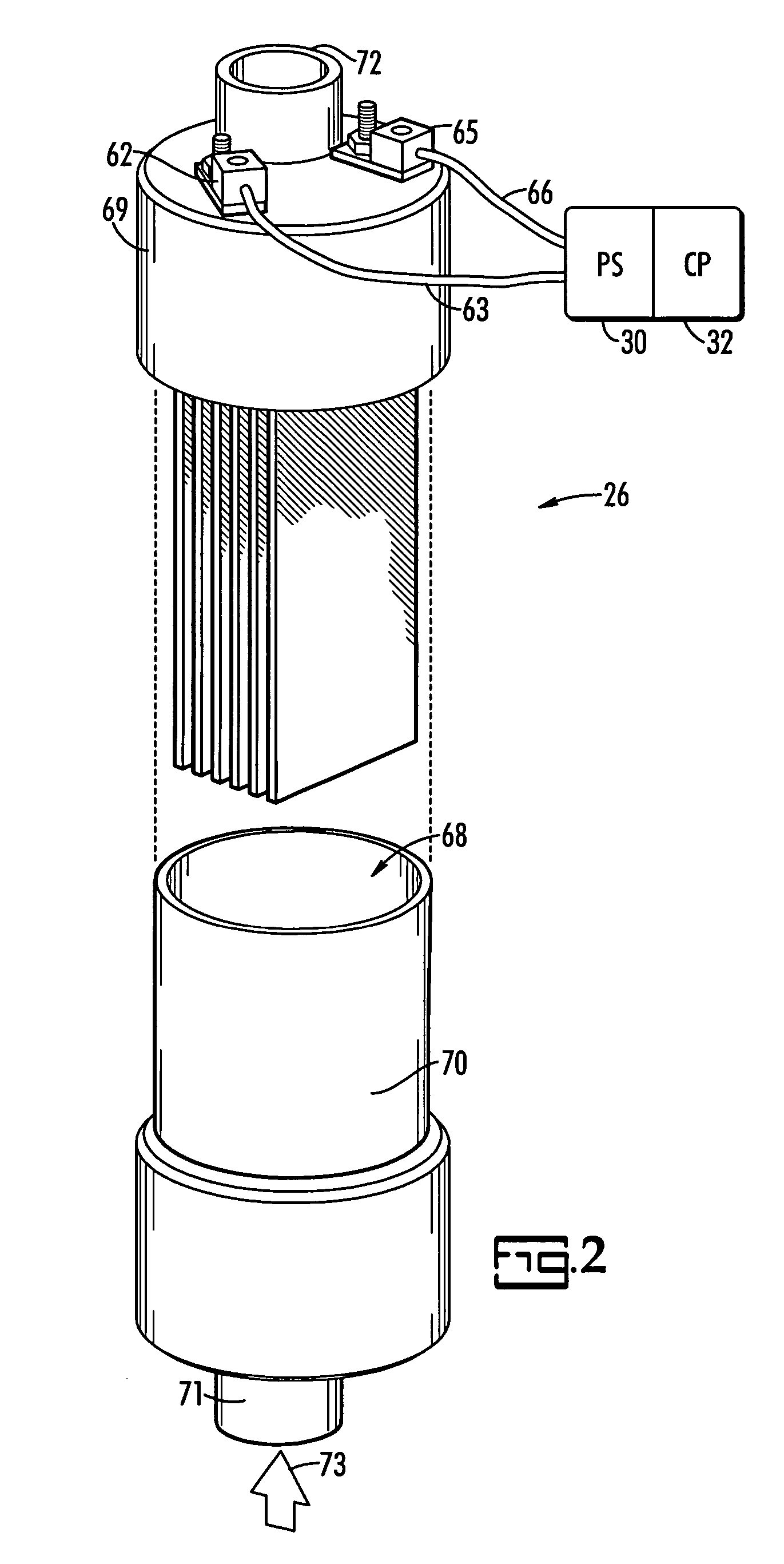Method and system for treating radioactive waste water
a radioactive waste water and treatment method technology, applied in the field of waste water processing, can solve the problems of water flowing through the reactor core, being recycled, inevitably contaminated with iron, contaminated water further with organics and non-radioactive colloids, etc., to prevent scaling, reduce waste water, and reduce the effect of ec unit efficiency loss
- Summary
- Abstract
- Description
- Claims
- Application Information
AI Technical Summary
Benefits of technology
Problems solved by technology
Method used
Image
Examples
Embodiment Construction
[0055] In the electrocoagulation (EC) unit of the invention, a direct current is applied to a cathode-anode system in order to destabilize any dissolved ionic or electrostatically suspended contaminants. During this electrolytic process, cationic species from the metal of sacrificial anodes dissolve into the water. These positively charged cations neutralize and thereby destabilize negatively charged contaminants and also create metal oxides and hydroxides which precipitate and bring down the neutralized contaminants as part of the precipitate. If aluminum anodes are used, aluminum oxides and hydroxides are formed. If iron anodes are used, iron oxides and hydroxides form. Aluminum anodes are preferred for the present invention because iron anodes become readily coated with iron oxide, which interferes with the electrolytic process.
[0056] The formation of the metal oxides and hydroxides, and their subsequent precipitation, are similar to the processes which occur during coagulation ...
PUM
| Property | Measurement | Unit |
|---|---|---|
| Electrical conductivity | aaaaa | aaaaa |
| Size | aaaaa | aaaaa |
| Magnetism | aaaaa | aaaaa |
Abstract
Description
Claims
Application Information
 Login to View More
Login to View More - R&D
- Intellectual Property
- Life Sciences
- Materials
- Tech Scout
- Unparalleled Data Quality
- Higher Quality Content
- 60% Fewer Hallucinations
Browse by: Latest US Patents, China's latest patents, Technical Efficacy Thesaurus, Application Domain, Technology Topic, Popular Technical Reports.
© 2025 PatSnap. All rights reserved.Legal|Privacy policy|Modern Slavery Act Transparency Statement|Sitemap|About US| Contact US: help@patsnap.com



